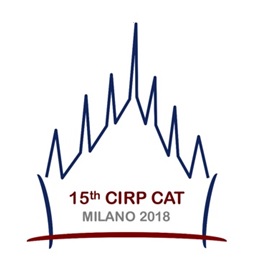
Benjamin Schleich, Kristina Wärmefjord, Rikard Söderberg, Sandro Wartzack
Abstract
Product realization processes are undergoing radical change considering the increasing digitalization of manufacturing fostered by cyber- physical production systems, the internet of things, big data, cloud computing, and the advancing use of digital twins. These trends are subsumed under the term "industry 4.0" describing the vision of a digitally connected manufacturing environment. The contribution gives an overview of future challenges and potentials for next generation geometry assurance and geometrical variations management in the context of industry 4.0. Particularly, the focus is set on potentials and risks of increasingly available manufacturing data and the use of digital twins in geometrical variations management.


A Brief Analysis of Recent ISO Tolerancing Standards and Their Potential Impact on Digitization of Manufacturing
Edward P Morse, Craig M Shakarji, Vijay Srinivasan
Abstract
The publication of the latest edition of ISO 1101 in 2017 is a landmark event in the development of ISO tolerancing standards. It represents an important milestone in the evolution of ISO tolerancing standards powered by a synergy between technological developments in tolerancing (for specification) and metrology (for verification). The external forces that caused this synergistic evolution stem from digitization of manufacturing (also variously called Smart Manufacturing, Cyber-Manufacturing, Cyber-Physical Production Systems, and Industrie 4.0). This paper provides a brief analysis of a new set of customer-facing ISO tolerancing standards which, along with their promises and challenges, will have a significant impact on digitization of manufacturing.

Information-rich surface metrology
Nicola Senin, Richard Leach
Abstract
Information-rich metrology refers to the incorporation of any type of available information in the data acquisition and processing pipeline of a measurement process, in order to improve the efficiency and quality of the measurement. In this work, the information-rich metrology paradigm is explored as it is applied to the measurement and characterisation of surface topography. The advantages and challenges of introducing heterogeneous information sources in the surface characterisation pipeline are illustrated. Examples are provided about the incorporation of structured knowledge about a part nominal geometry, the manufacturing processes with their signature topographic features and set-up parameters, and the measurement instruments with their performance characteristics and behaviour in relation to the specific properties of the surfaces being measured. A wide array of surface metrology applications, ranging from product inspection, to surface classification, to defect identification and to the investigation of advanced manufacturing processes, is used to illustrate the information-rich paradigm.














